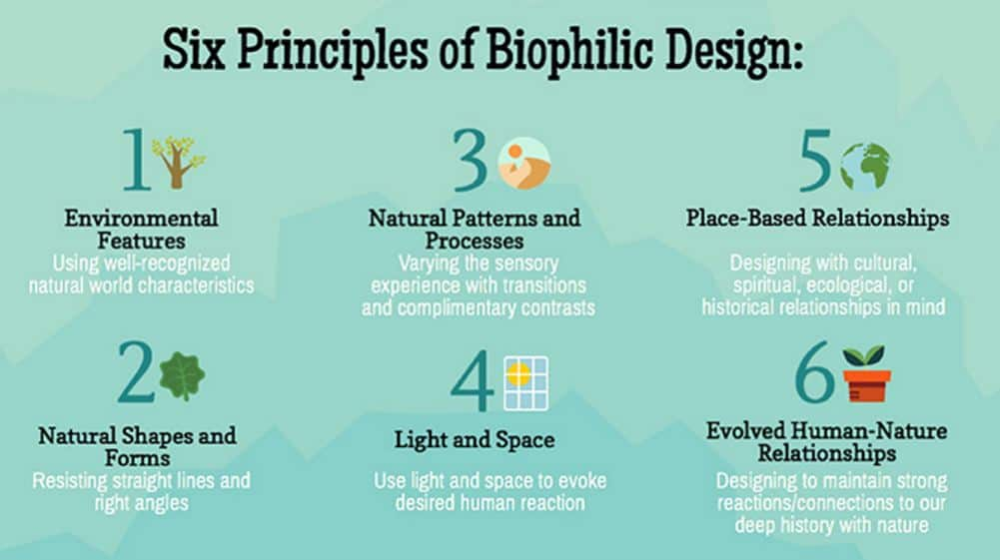How Does Architecture Integrate Principles Of Biophilic Design In Interiors?

Have you ever felt calm, rejuvenated, and at ease while walking through a lush green forest? That's what biophilic design embodies. It's a design approach that incorporates nature and its patterns to create a stress-free, productive, and pleasant environment. Biophilic Design: The Shape of Nature is a book that reveals the benefits of this practice in interior design and architecture.
What is biophilic design?
Biophilic design is the art of bringing nature to the built environment. It creates a space that incorporates natural elements, such as sunlight, fresh air, plants, water, and organic materials. This design approach is not just about incorporating green spaces or adding plants; it's about creating an environment that connects humans with nature. It helps to create a more comfortable and stimulating environment that promotes well-being and productivity.
The benefits of biophilic design
The benefits of biophilic design extend beyond aesthetics. It's a science-backed approach that has numerous benefits:
Reduced stress
The natural environment is a proven stress-reliever. Exposure to natural light and greenery indoors has a calming effect that reduces stress and anxiety. Biophilic design creates an environment that promotes relaxation and rejuvenation, reducing stress levels and improving overall mood.
Increased productivity
Biophilic design has been shown to increase productivity and creativity in workspaces. It improves cognitive function, enhances focus and concentration, and promotes intellectual clarity. This design approach inspires innovation and creates an environment where ideas flow easily.
Better indoor air quality
Indoor air pollution is a major health issue. The inclusion of natural ventilation, greenery, and other aspects of biophilic design can improve indoor air quality, providing a healthier environment for occupants.
Improved physical health
Biophilic design can also have a positive impact on physical health. Natural elements, such as plants, can reduce blood pressure and heart rate, lower stress hormones, and improve sleep quality.
How to incorporate biophilic design in your space
You don't have to be an interior designer or an architect to incorporate biophilic design into your space. Here are some ways to bring nature indoors:
Add plants
Plants are the most accessible way to incorporate biophilic design into your space. They can be added to the office, home, or any indoor environment. Plants not only look beautiful, but they also improve air quality.
Create a green wall
A green wall is a great way to introduce the outdoors into your indoor space. It's perfect for small spaces, and it adds a vibrant touch to blank walls.
Add water features
Water features, such as fountains or aquariums, add a calming element to any space. They create a soothing sound that promotes relaxation and reduces stress.
Use natural materials
Natural materials, such as wood, stone, or bamboo, can add a warm and earthy feel to the indoor environment.
Maximize natural light
Maximizing natural light is a simple way to incorporate biophilic design. It enhances mood and reduces energy consumption while making the space feel brighter and more spacious.
Design for views
A great view can create a sense of well-being and a connection to nature. Design your space to take advantage of the natural views outside your window.
Frequently asked questions (FAQ)
Q: What is the difference between biophilic design and biomimicry?
A: Biophilic design focuses on the inclusion of natural elements in interior design and architecture. Biomimicry, on the other hand, seeks to mimic patterns and strategies found in nature to solve design problems.
Q: Can biophilic design be incorporated in small spaces?
A: Yes, biophilic design can be incorporated in small spaces. The use of plants, green walls, and natural materials can create a small indoor oasis.
Q: Is biophilic design expensive?
A: Biophilic design doesn't have to be expensive. Simple changes, such as adding plants or maximizing natural light, can create a positive impact on the indoor environment.
Conclusion
Biophilic design is a powerful approach that not only enhances the aesthetics of an environment but also promotes a range of health and wellbeing benefits. Incorporating natural elements, such as plants, natural materials, and water features, echoes the sensory and emotional experiences that nature provides and facilitates a closer connection to it. The incorporation of biophilic design to interior and architectural spaces has been shown to improve health outcomes, boost productivity, concentration, and creativity, and enhance mood and overall wellbeing.


Post a Comment for "How Does Architecture Integrate Principles Of Biophilic Design In Interiors?"